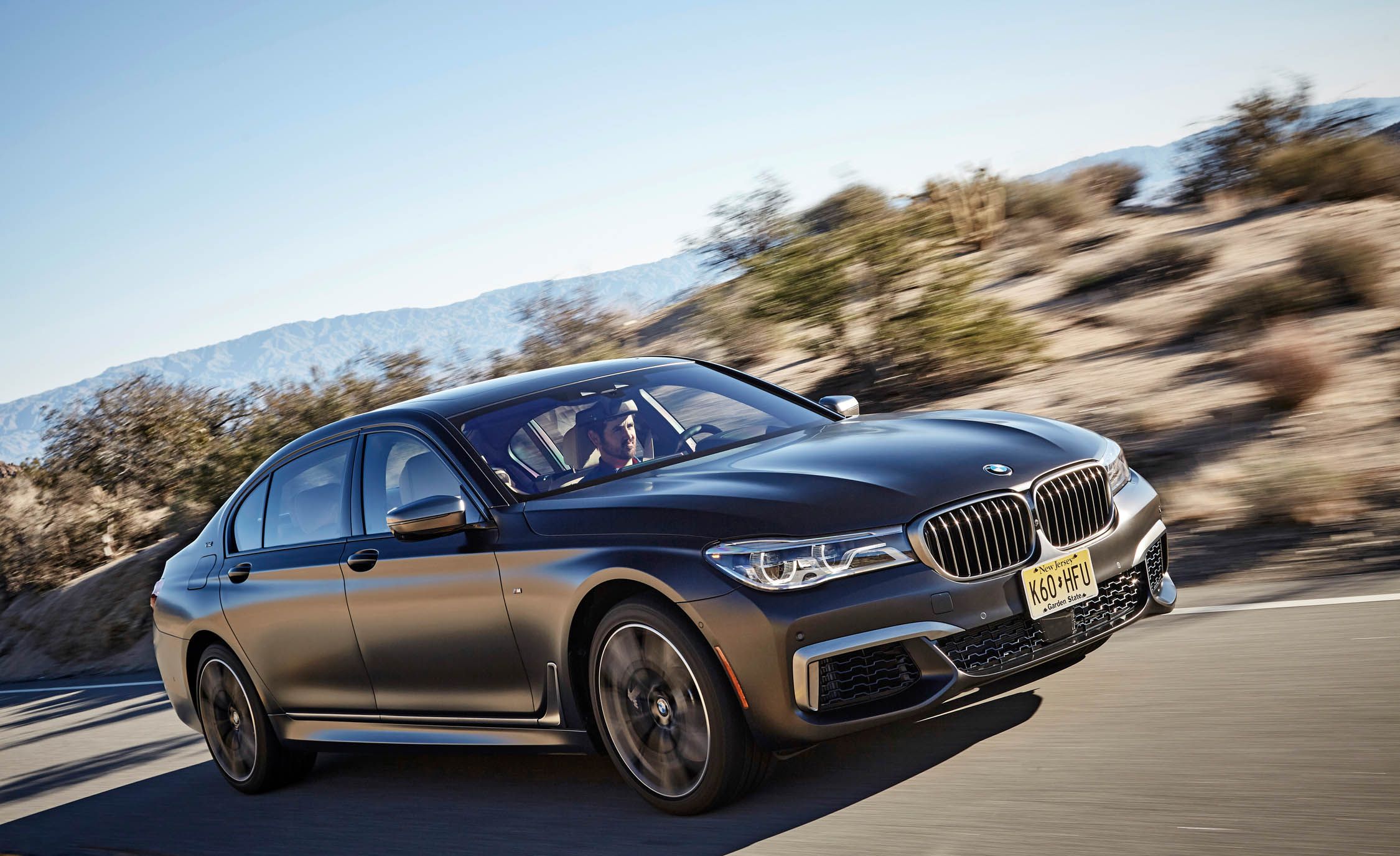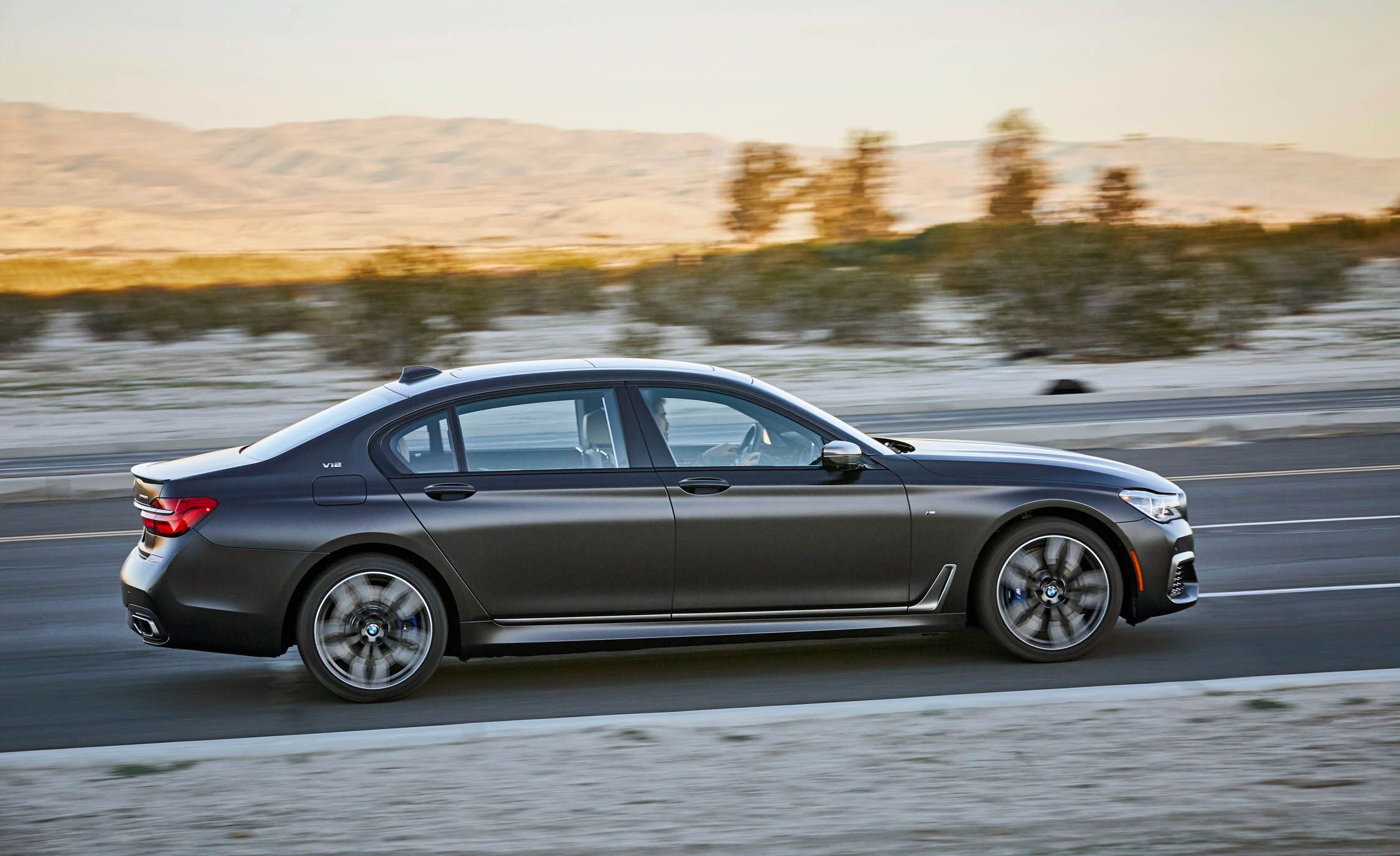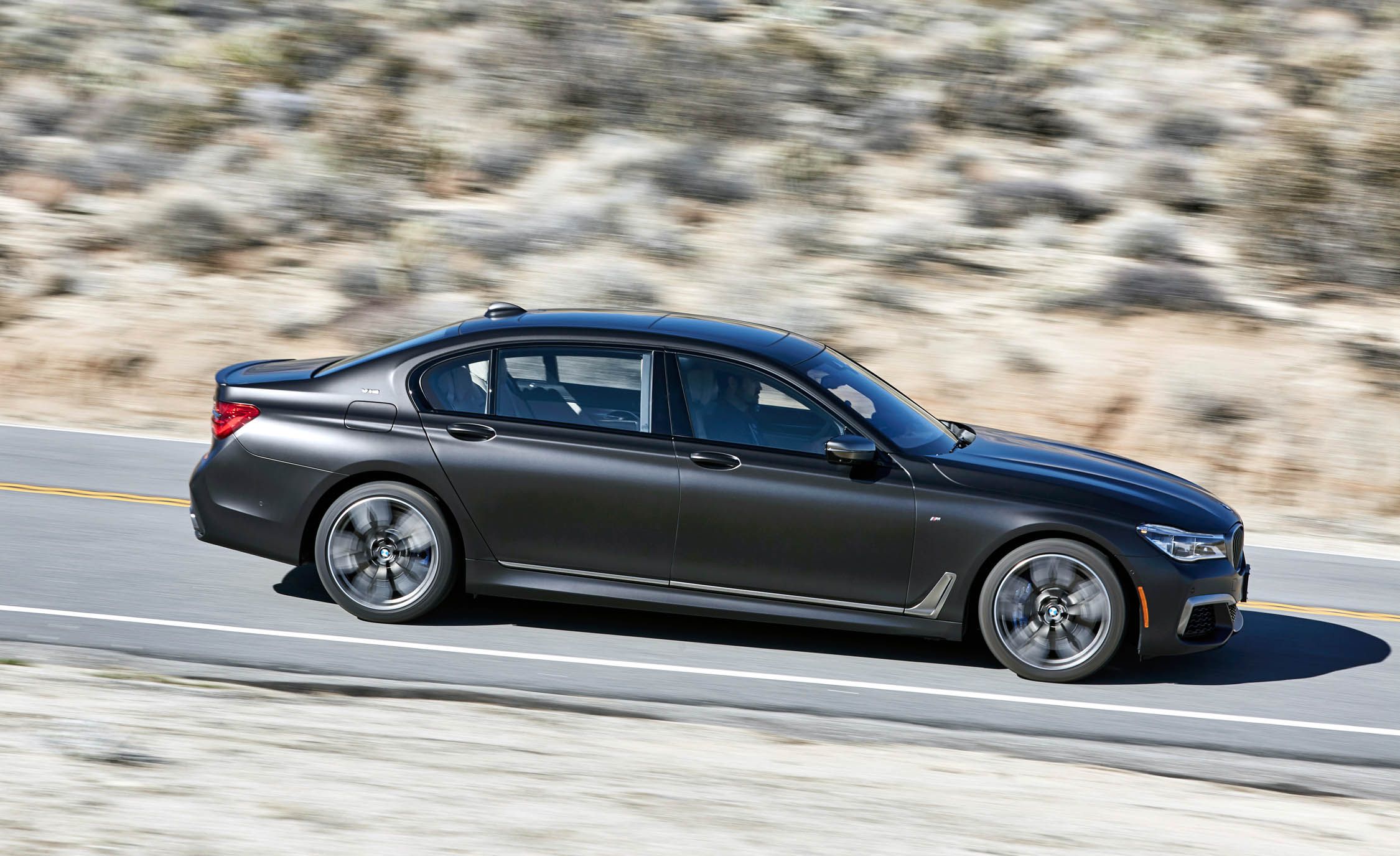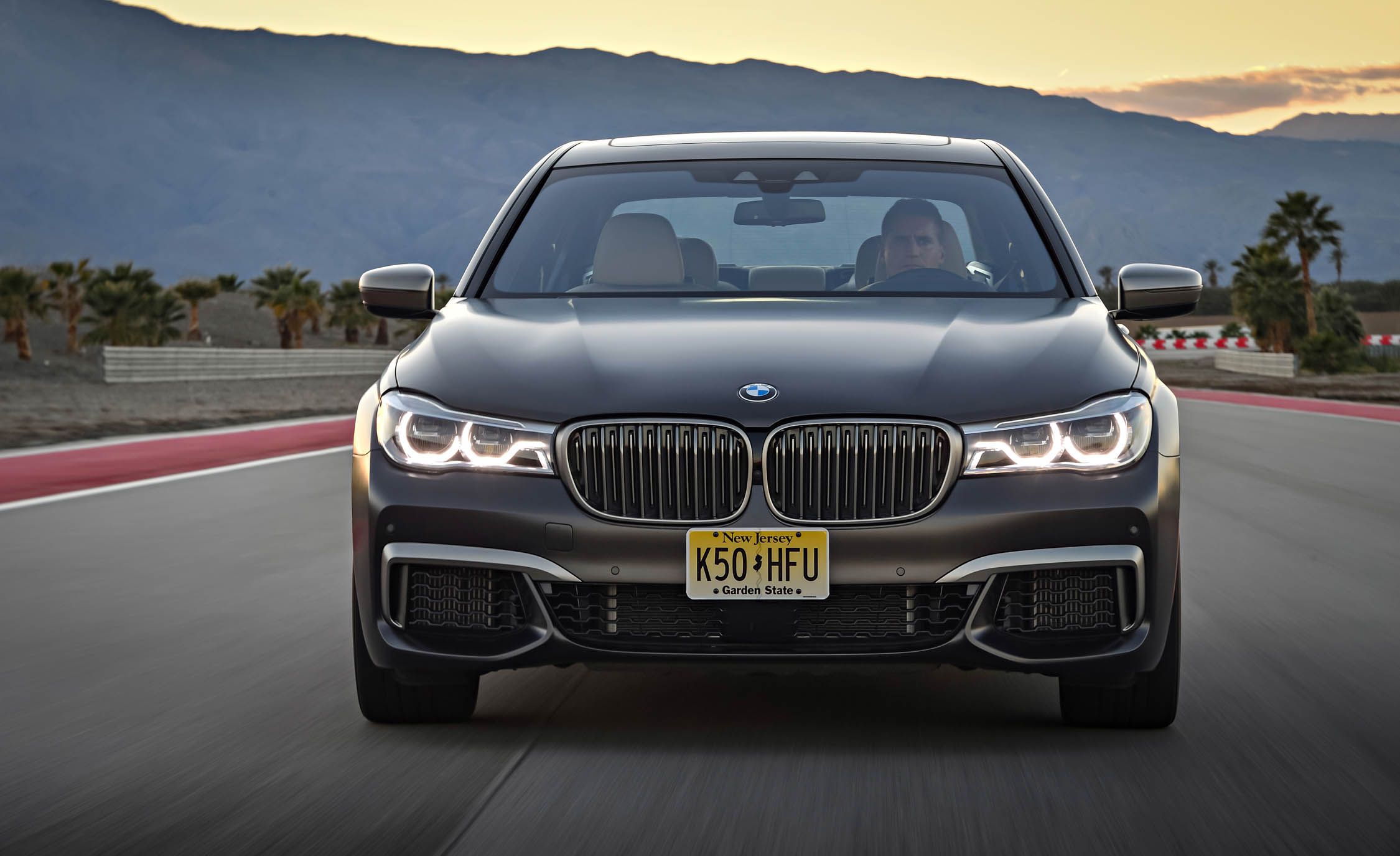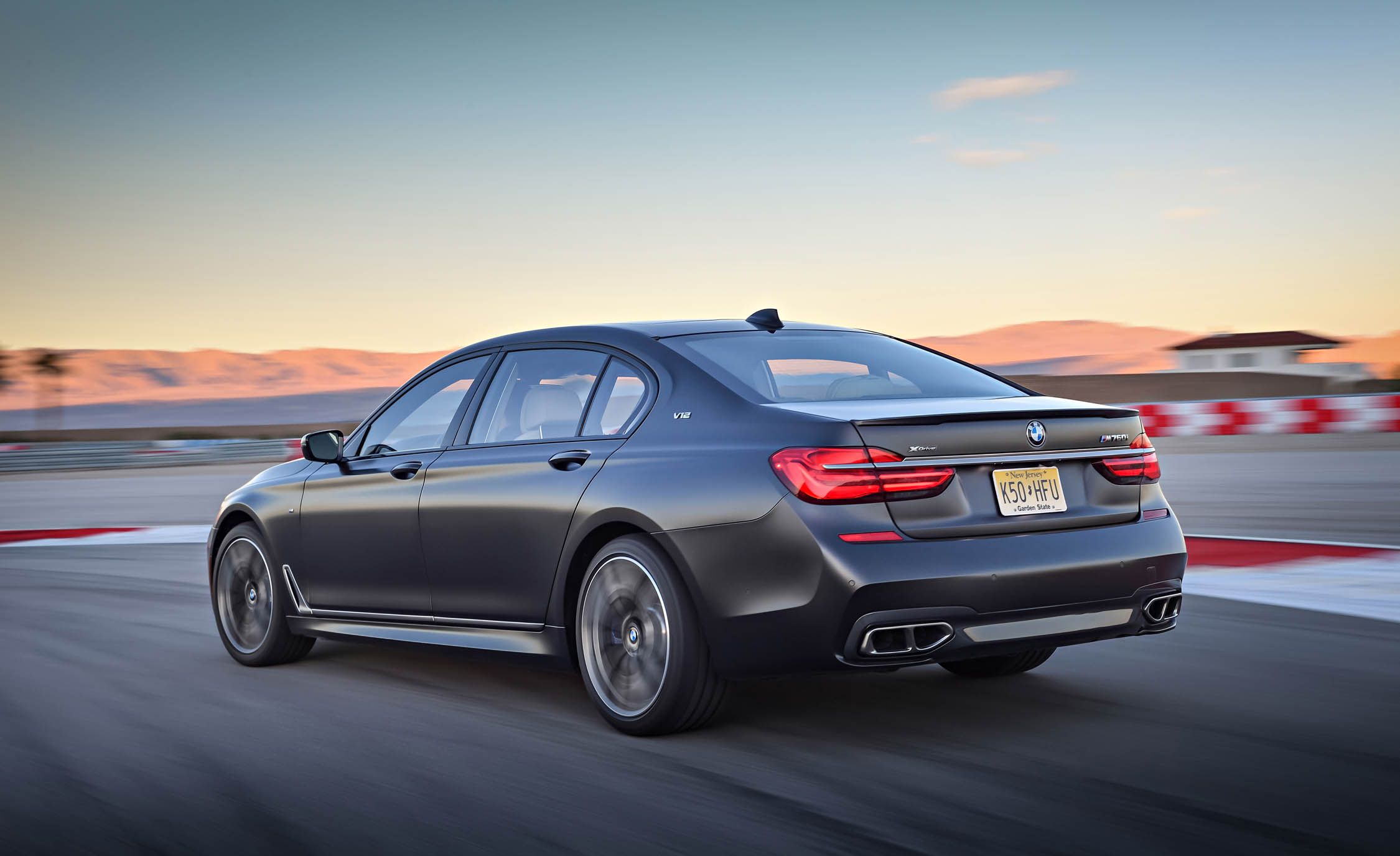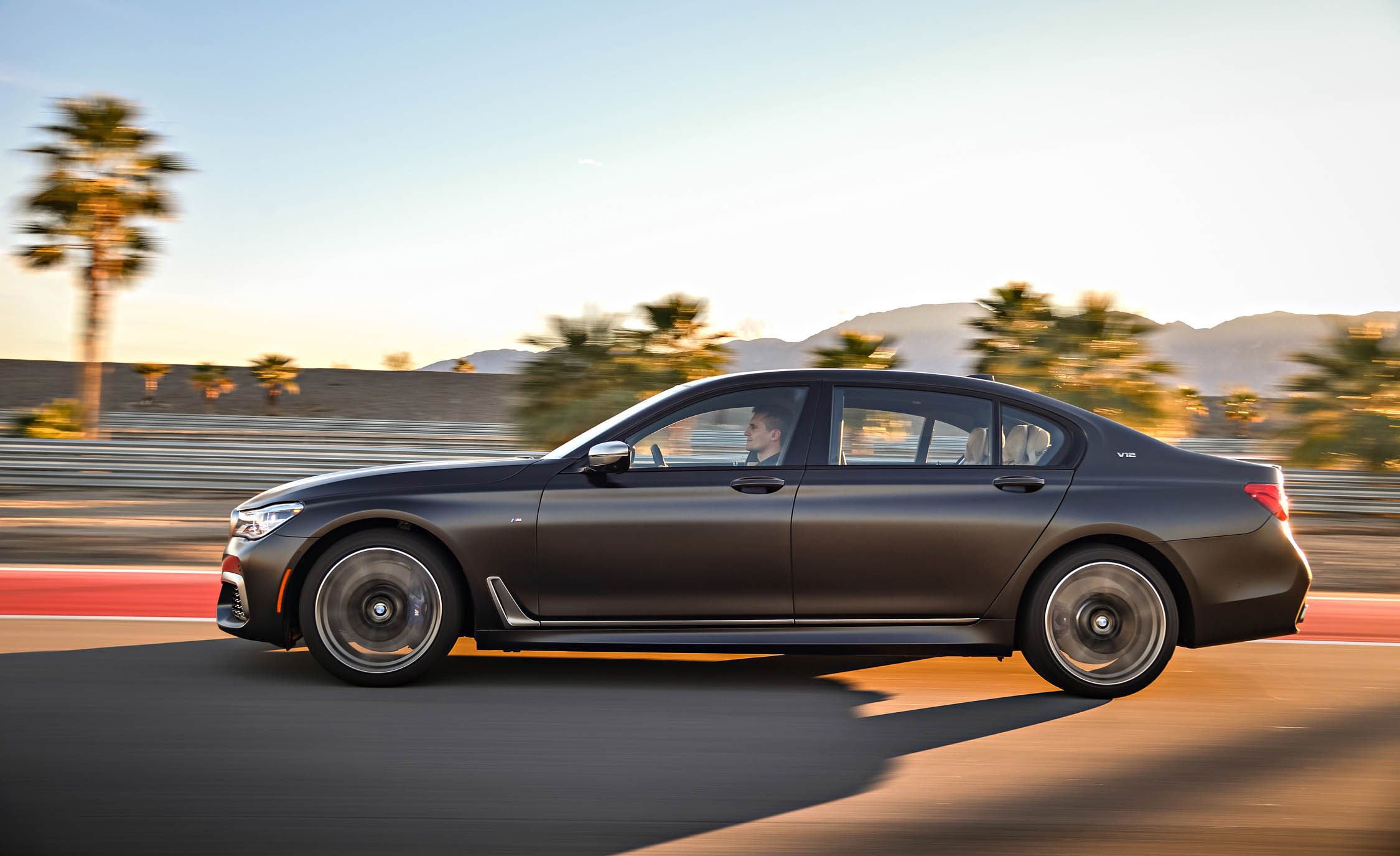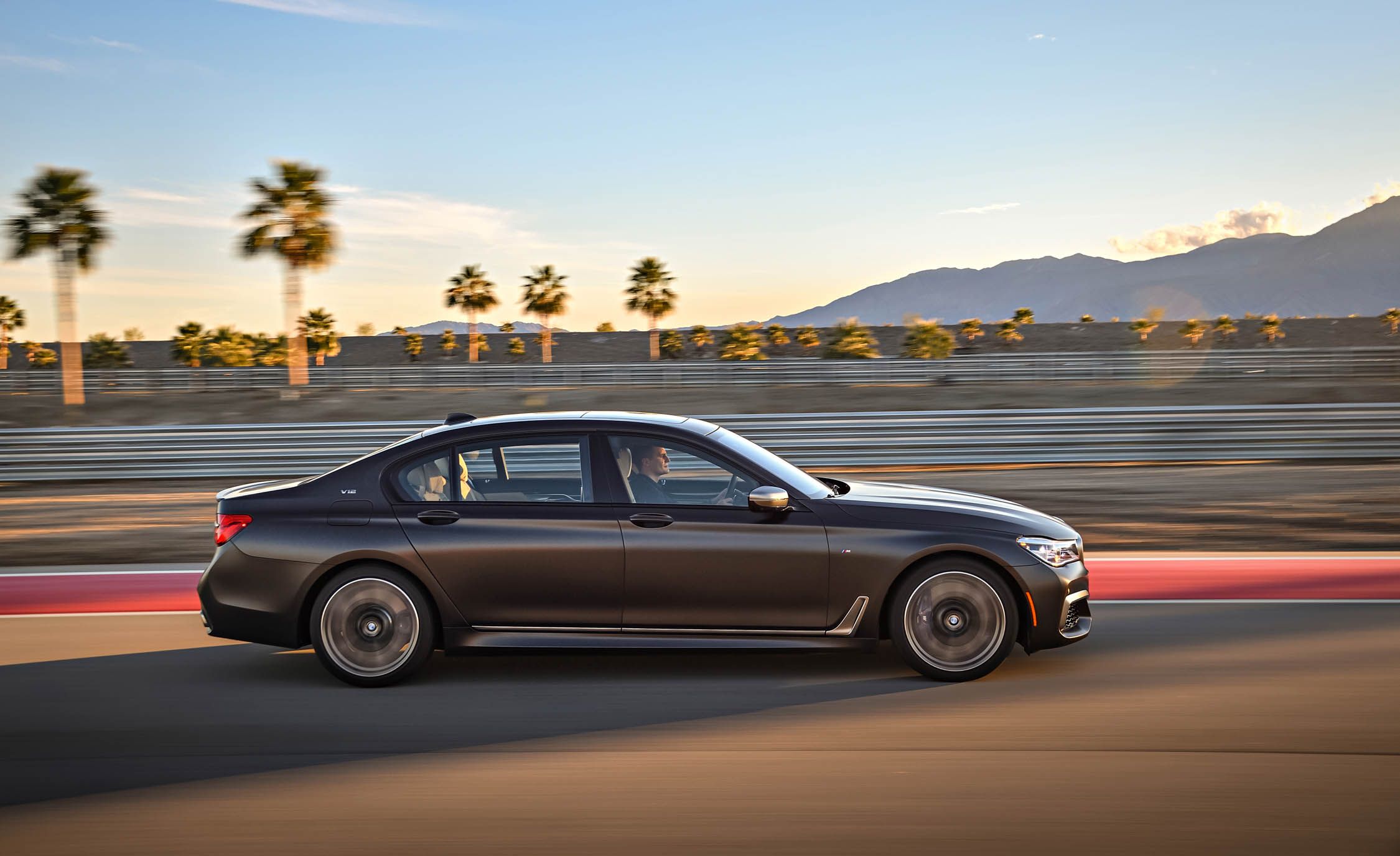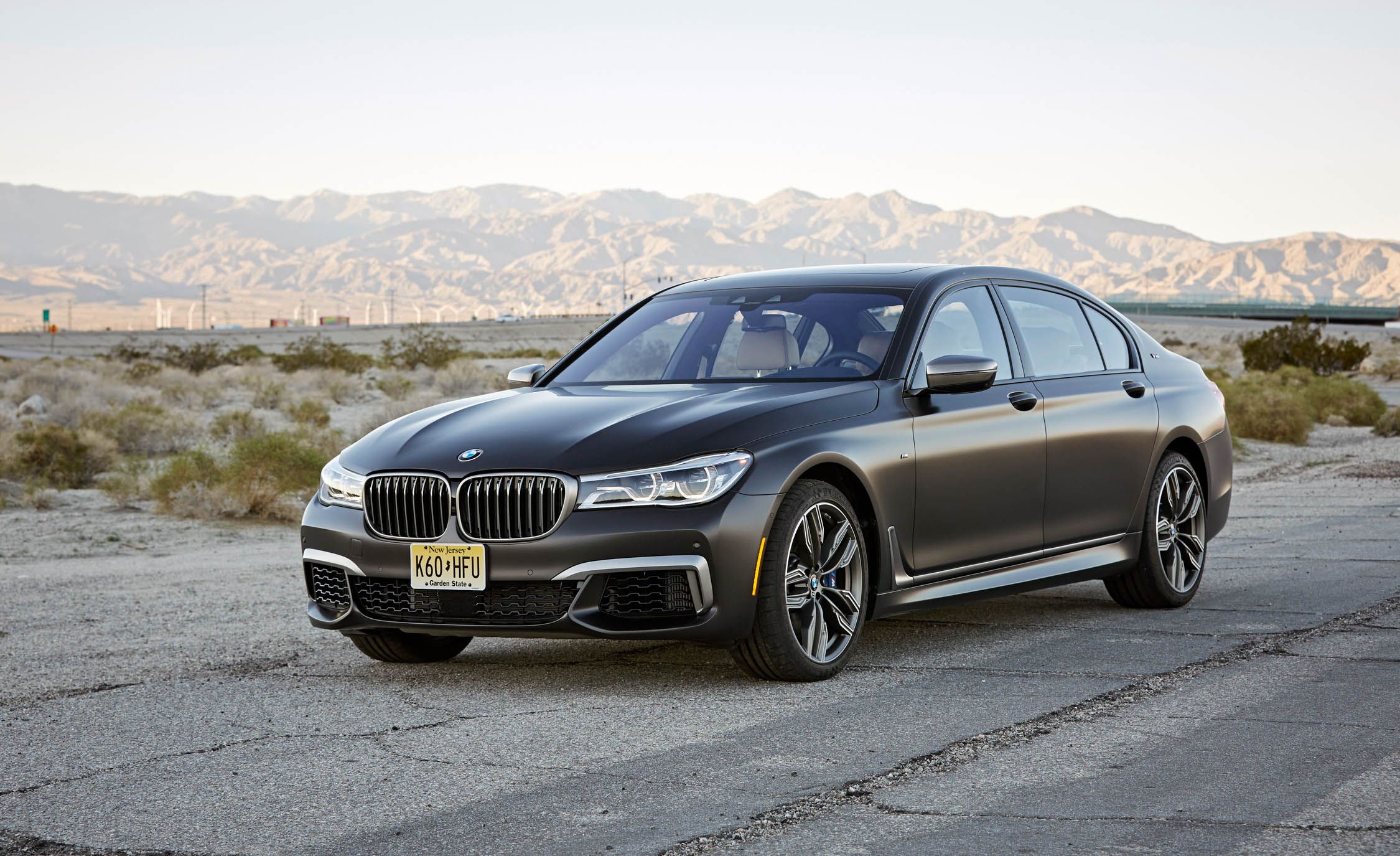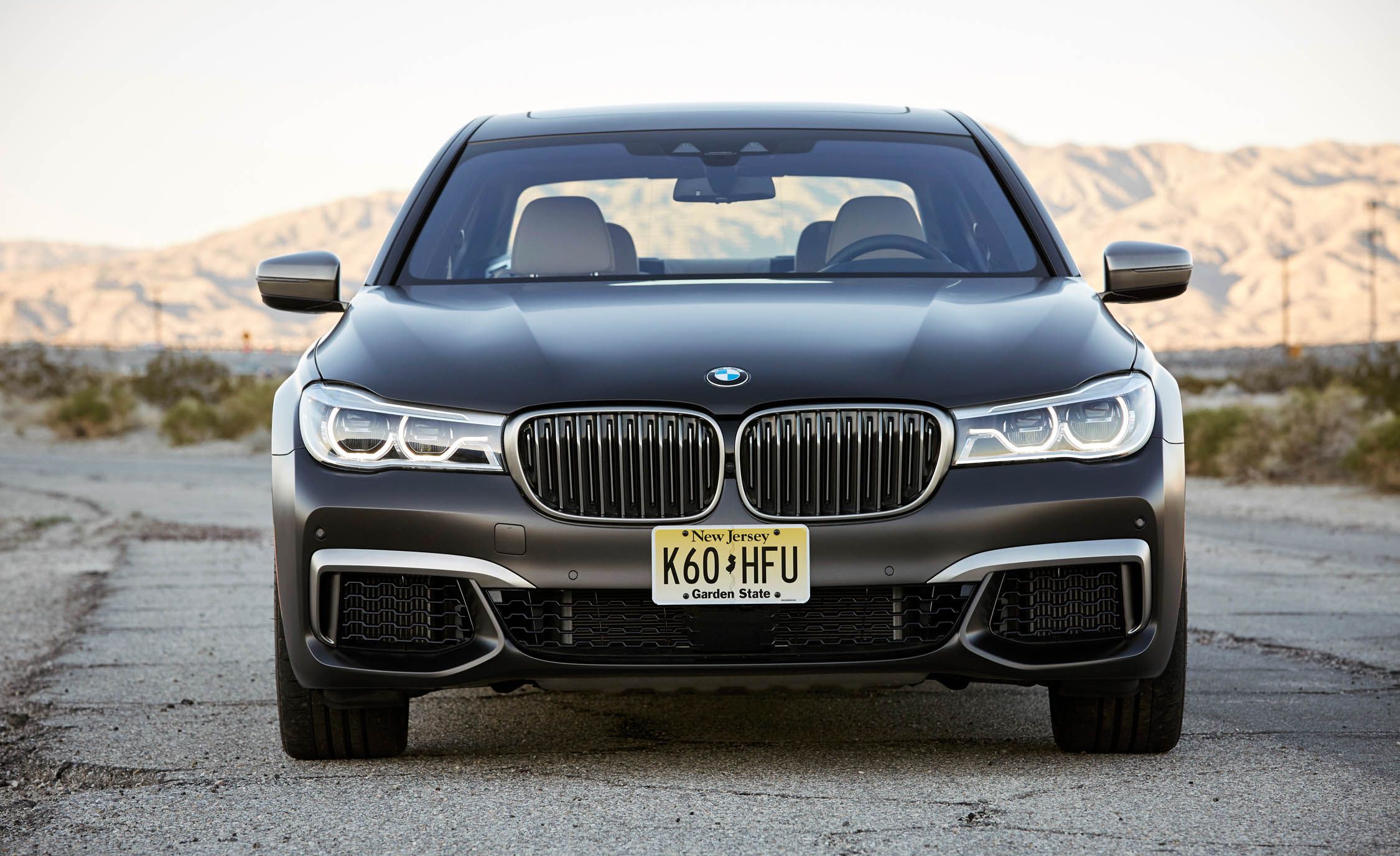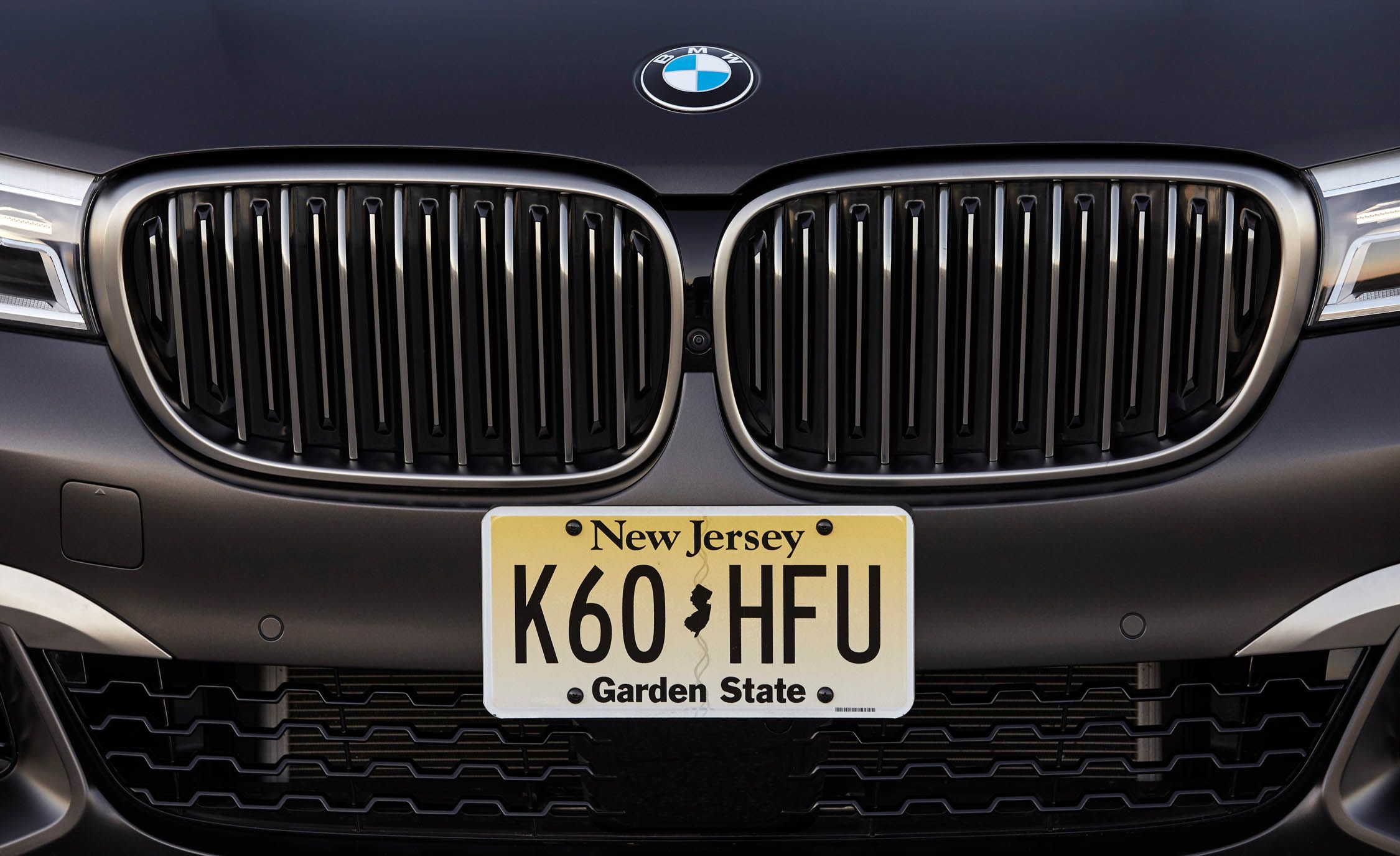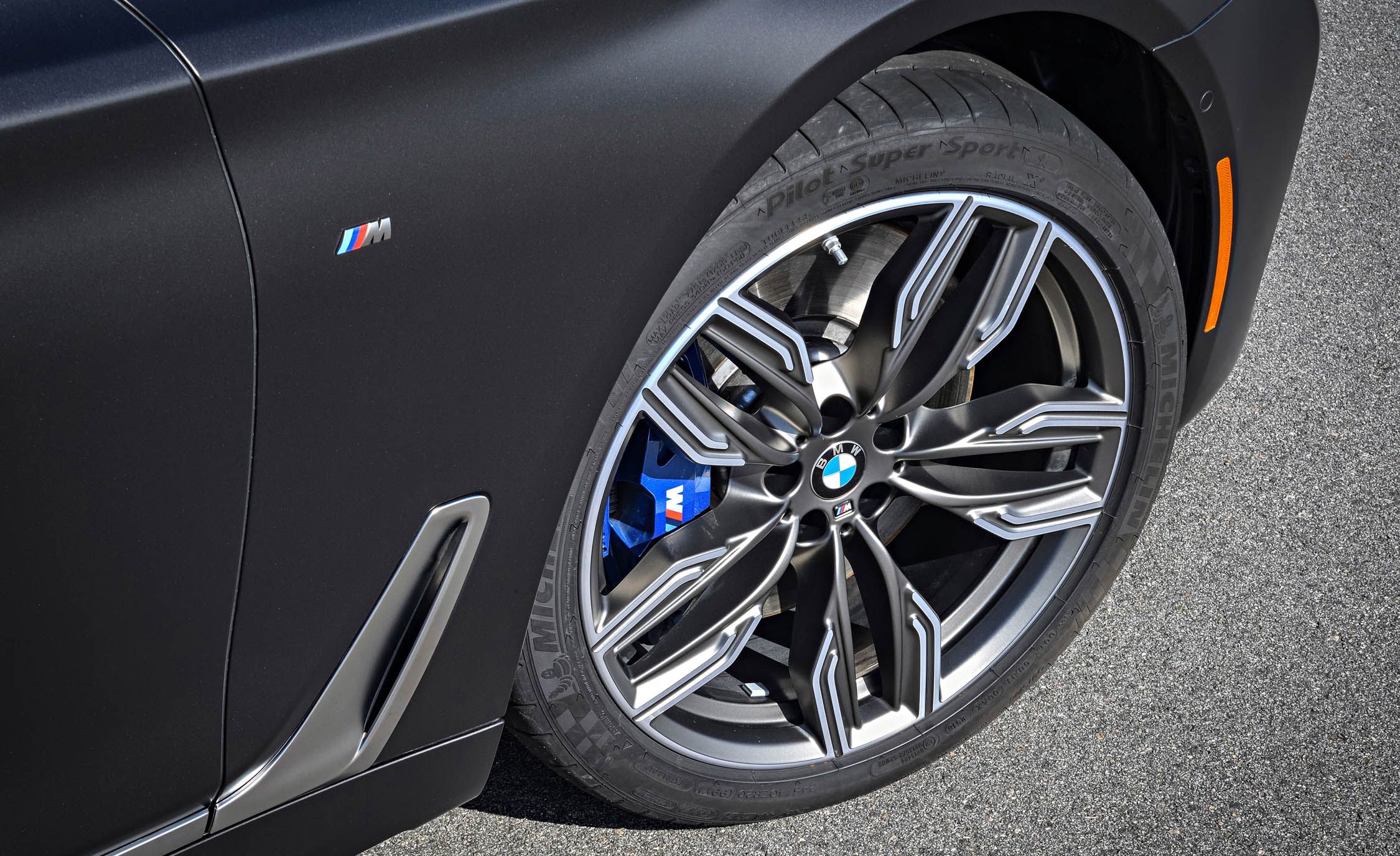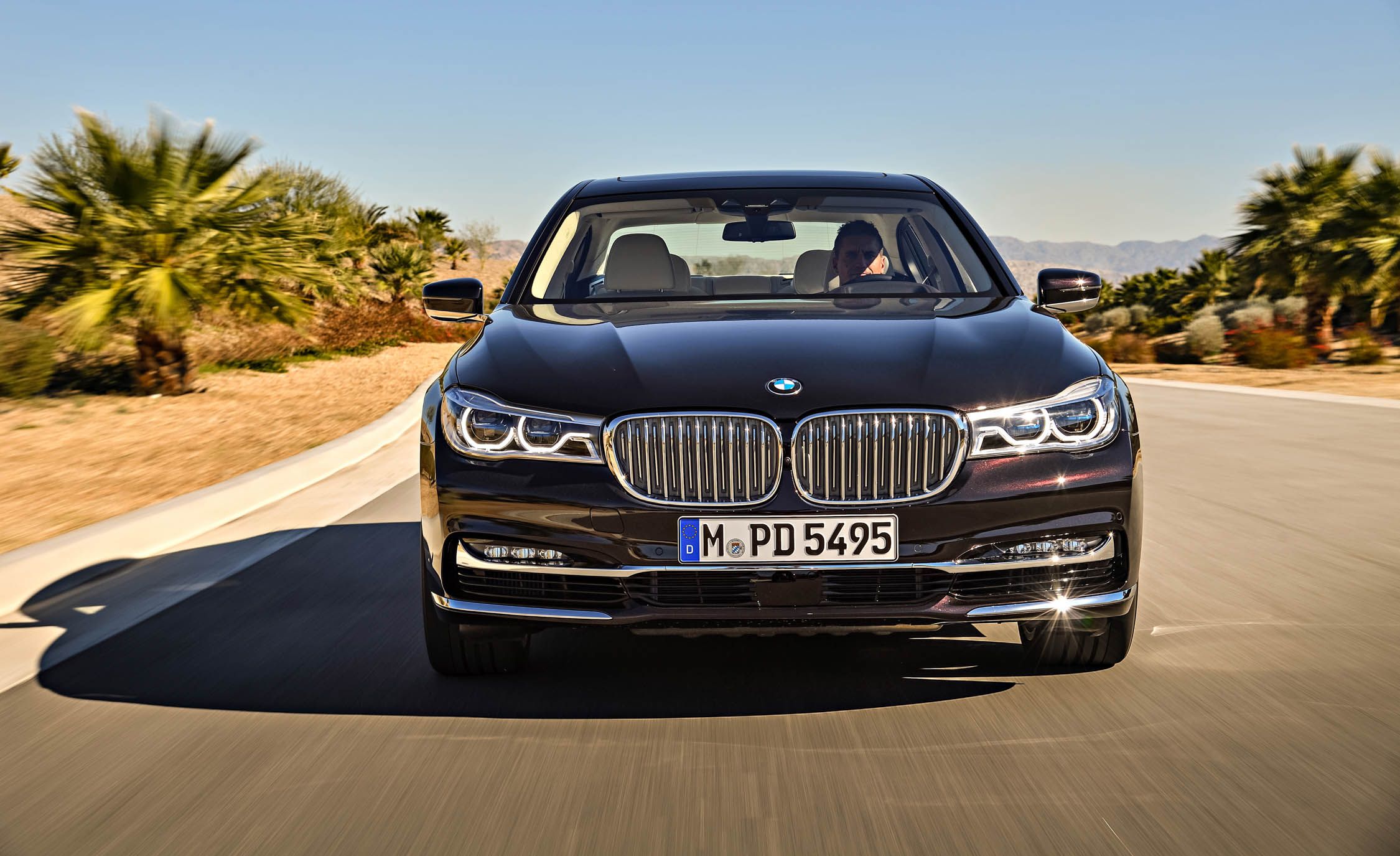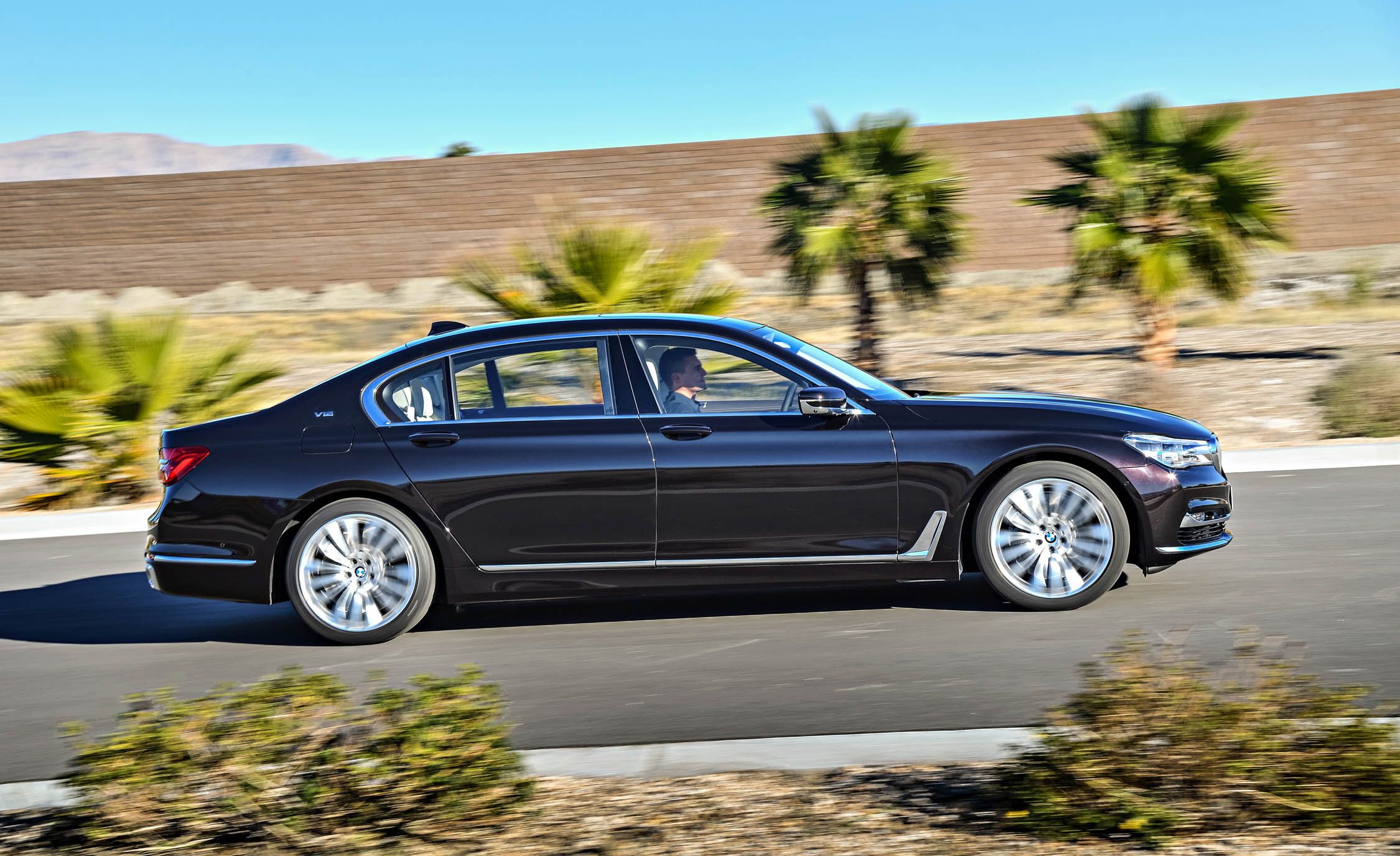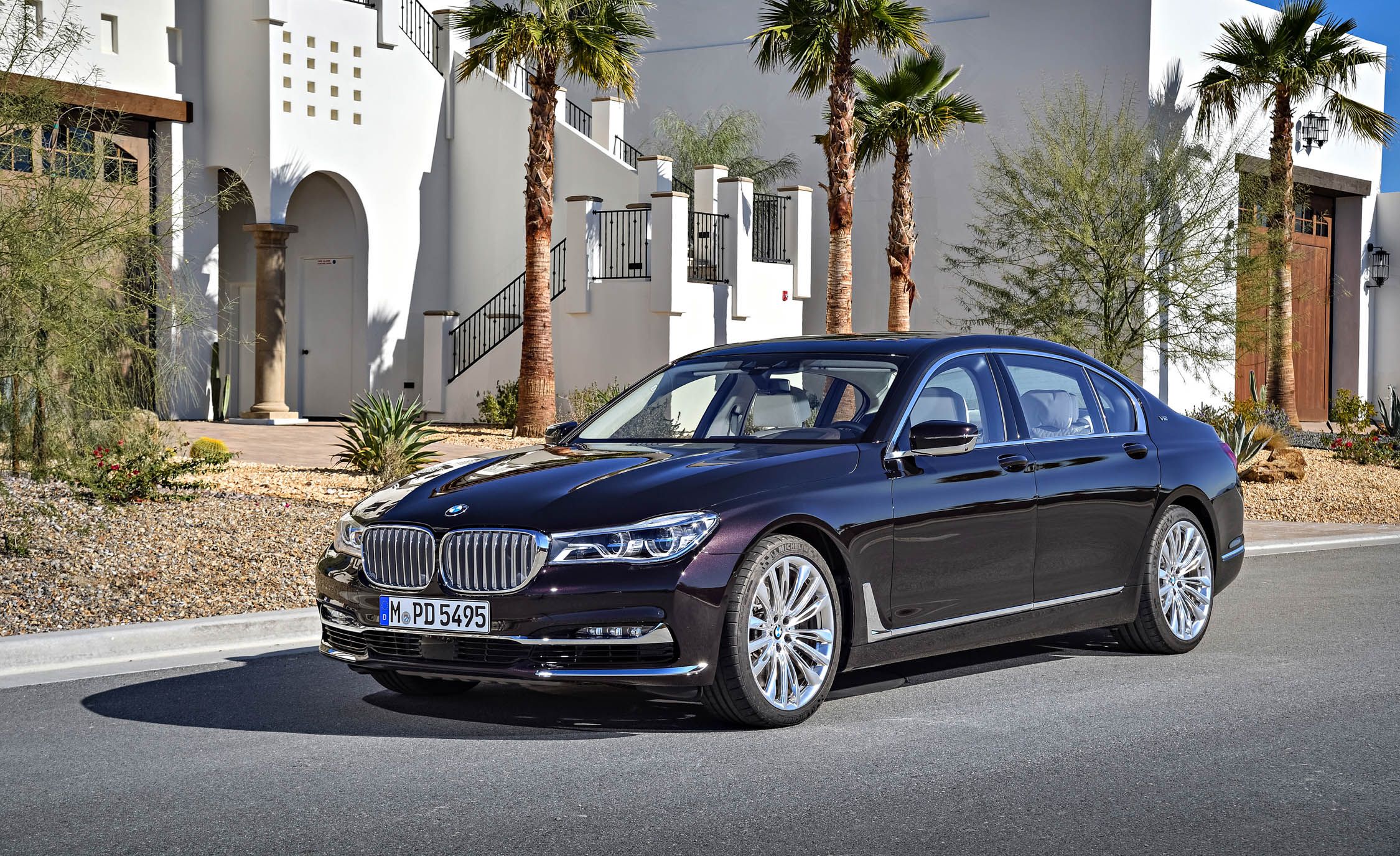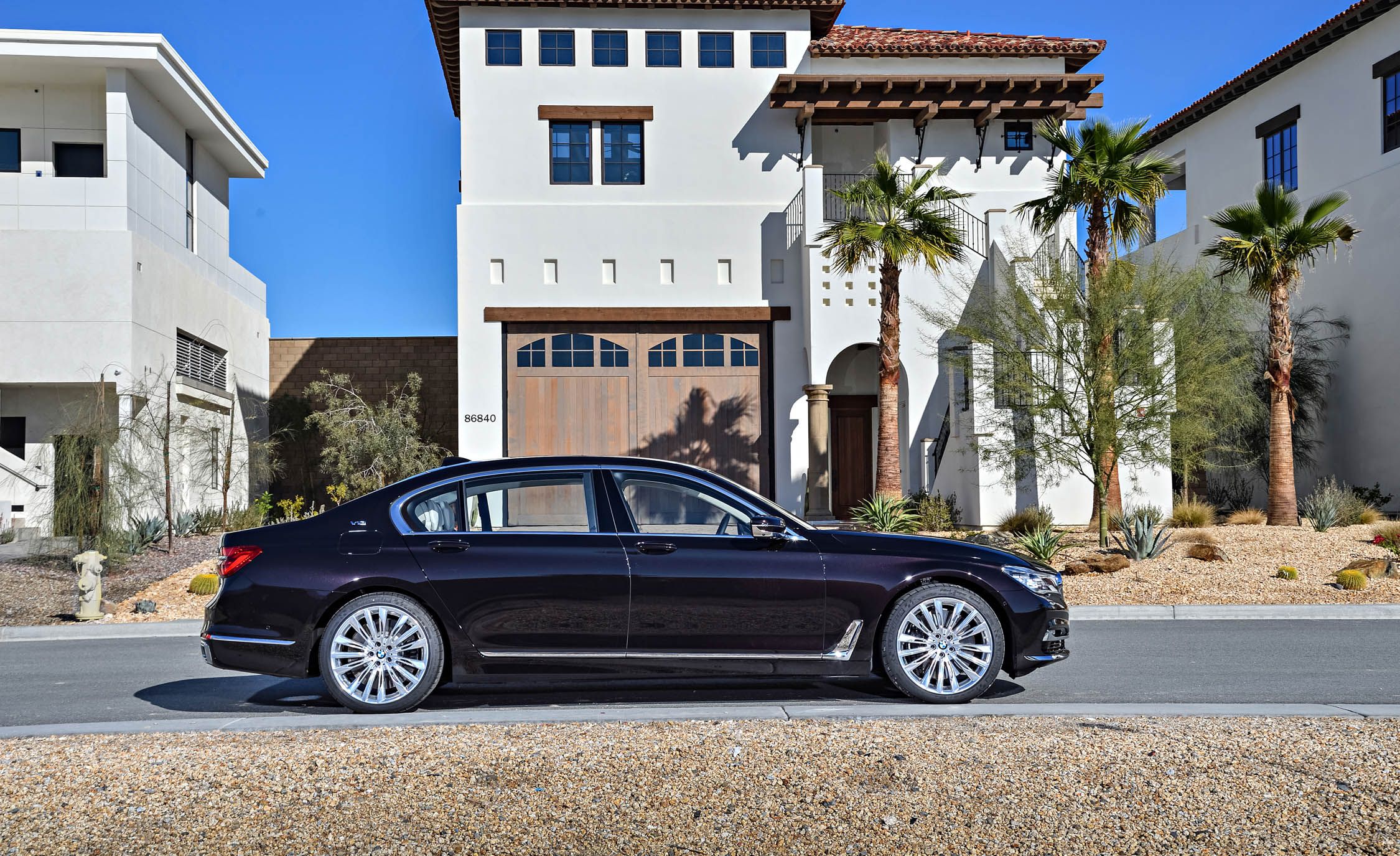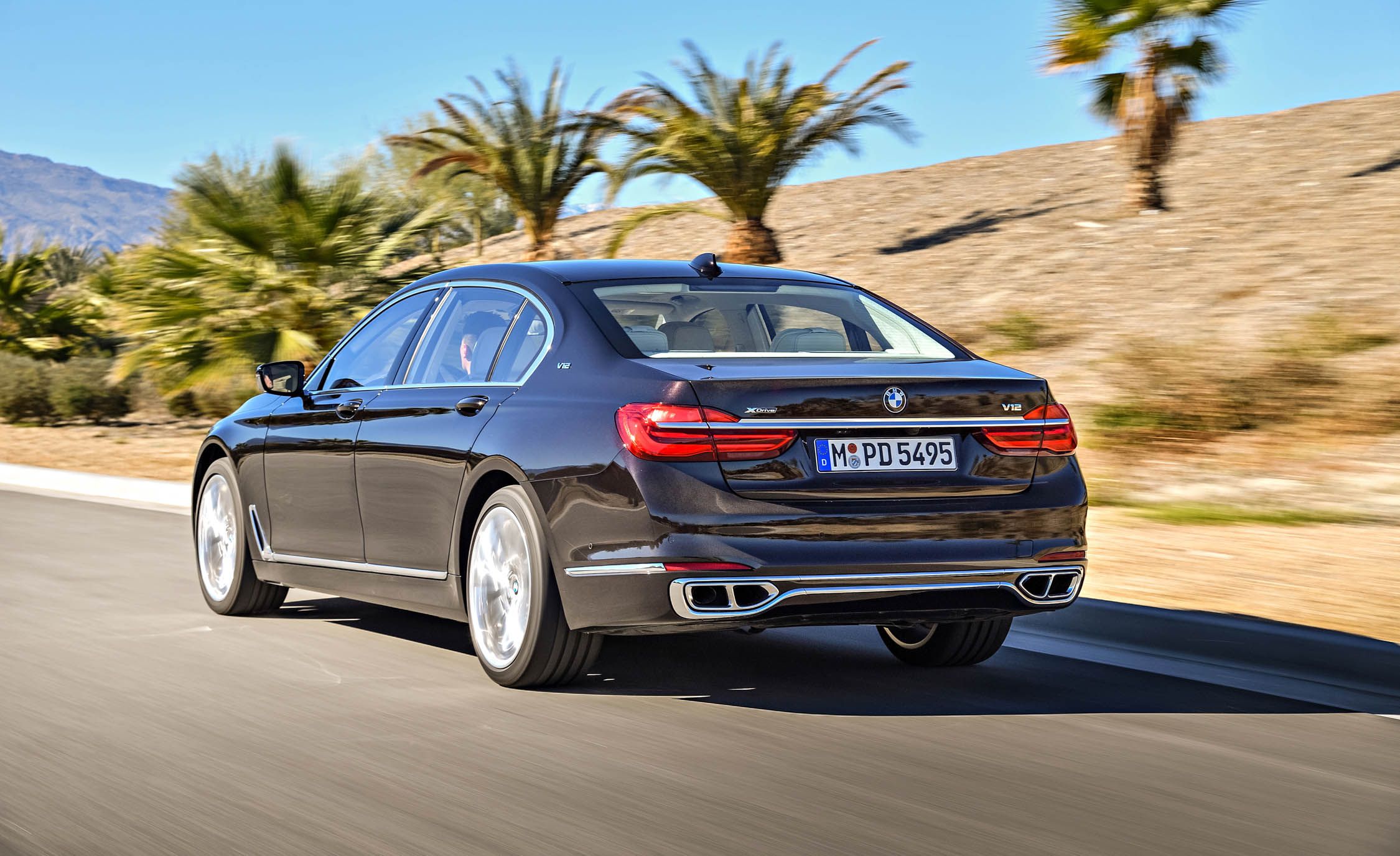The 2017 BMW 740i is powered by a turbocharged 3.0-litre inline-six engine with an output of 320 horsepower and 332 pound-feet of torque. Additionally, the 740e xDrive features a turbocharged four-cylinder engine as well as an electric motor that is supported by a lithium-ion battery, delivering an expected total output of roughly 325 horsepower. Moving up to the 750i would see the installation of a turbocharged 4.4-litre V8 engine (445 horsepower, 480 pound-feet). Finally, the model range is rounded off with the M760i, which benefits from the presence of an impressive turbocharged 6.6-litre V12 engine (601 horsepower, 590 pound-feet).
Rear-wheel drive is provided as standard on the 740i and 750i, with xDrive all-wheel drive being offered as an optional extra for both models and being provided as standard for the 740e and M760i. Every edition also utilizes an eight-speed automatic transmission.
The BMW 7-series, after decades of steering clear from the M division and the more sporting touches it offers (save for mostly visual M Sport packages), now controversially has several M badges adorning its largest sedan. While unmistakably a prestigious model, this M760i does not represent a full M creation in the same style as the M3 or the M5; instead, it takes its place within the M Performance lineup, alongside models such as the M240i, the X4 M40i, and the M550i. The M760i is the most expensive model in the 7-series selection and is outfitted with a V-12 engine. Nevertheless, it contrasts markedly with the previous iteration of the V-12-powered 760i, a luxurious and indulgent model which had limited affinity for sporty elements.
Perchance BMW was beginning to sense a feeling of disquiet caused by their longtime tuner Alpina. The new variant of their 7-Series, the B7, is a powerful sedan possessing a twin-turbocharged V-8 delivering an even 600 horse power. With that in mind, BMW's decision to modify the M760i's twin-turbocharged 6.6-liter V-12 motor to an exact 601 horse power appears to be a distinct stratagem to keep the original manufacture at the top level of the ranking. However, we are not protesting - especially when this glorious V-12 engine furnishes an astounding 590 lb-ft of torque at aIt appears that BMW was beginning to feel threatened by longtime partner Alpina. The latter's latest model, the B7, features a twin-turbo V-8 engine generating an even 600 horsepower. Consequently, BMW has chosen to increase the power of its M760i's twin-turbo 6.6-liter V-12 to 601 horsepower in a bid to maintain its superiority in the market. We certainly are not objecting to this move as the V-12 produces 590 lb-ft of torque at a low 1550 rpm (1450 rpm earlier than the Alpina's 590 lb-ft).
Trying to explain the smoothness of the power delivery with expressions such as `velvet' or `silk' does not fully capture the effortless nature of this V-12. The long-travel accelerator pedal makes it easy to transition to the power slowly, while Sport mode increases the response without feeling too abrupt. All things considered, our only criticism is that the artificial sound coming through the speakers fails to properly showcase the remarkable V-12. As a suggestion to BMW, we suggest that the engine be allowed to sing out in its true voice.
The combination of the eight-speed automatic transmission and all-wheel drive means that the M760i can achieve 0-60 mph in 3.5 seconds and reach 100 mph in 7.9 seconds. Its 11.7-second performance in the quarter-mile at 123 mph compares to that of the 707-hp Hellcat. Although it does not match the performance achieved by the Alpina, the 1-hp advantage was not enough to make up for its 202-pound weight penalty.
Furthermore, this additional weight adversely affected the BMW's handling in comparison to the Alpina. Nonetheless, its 0.94-g skidpad results was a remarkable feat. Both vehicles were equipped with Michelin Pilot Super Sport tires, however the somewhat wider tires of the Alpina enabled it to amass an even greater 0.97 g. These cars come to a halt from 70 mph in 151 feet due to the mighty brakes and did not demonstrate any sign of fading.
The M760i can also be effectively used as a limousine, particularly when in Comfort mode. The aspects: the slow, syrupy steering, the cushioned air springs, and the quiet powertrain ensure a thriving Rolls-Royce experience (a similarity due to the shared V-12 engine between the two BMW-owned brands). Even with the 20-inch wheels, the ride is comfortable and peaceful. With the low-end torque, it is easy to cruise without need to exceed 3000 rpm.
Upon transitioning to Sport mode, the acceleration and transmission quicken, allowing the V-12 to reach its 7000-rpm redline. The suspension is likewise hardened, removing much of the body roll. Although the steering is heavy and has a certain lack of feel, the car is agile, allowing one to navigate corners with relative ease.
Ultimately, the decision to purchase an M760i with a V-12 engine is more of an exclusive choice as opposed to an effort to attain maximum performance. The base cost of $156,495 (including a $1700 gas-guzzler tax) is placed at the apex of the lineup and is relatively more expensive than the Alpina B7. Our test car additionally featured a special order Frozen Dark Brown Metallic matte-paint option for an extra $5200, as well as other options such as a panoramic sunroof, a Bowers & Wilkins stereo, upgraded leather, and a Luxury Rear Seating package with Rear Executive Lounge seating that included heated, ventilated, and massage seats with entertainment screens for a total of $7550.
Even at the total of $179,595, the 7-series is relatively inexpensive compared to its main competitor, the Mercedes-AMG S65, which carries a base cost of nearly $230,000. Therefore, if one is seeking to prove dominance over a neighbor's Alpina B7, then the M760i might appropriately be the perfect vehicle - so long as it is not employed in any street races.








